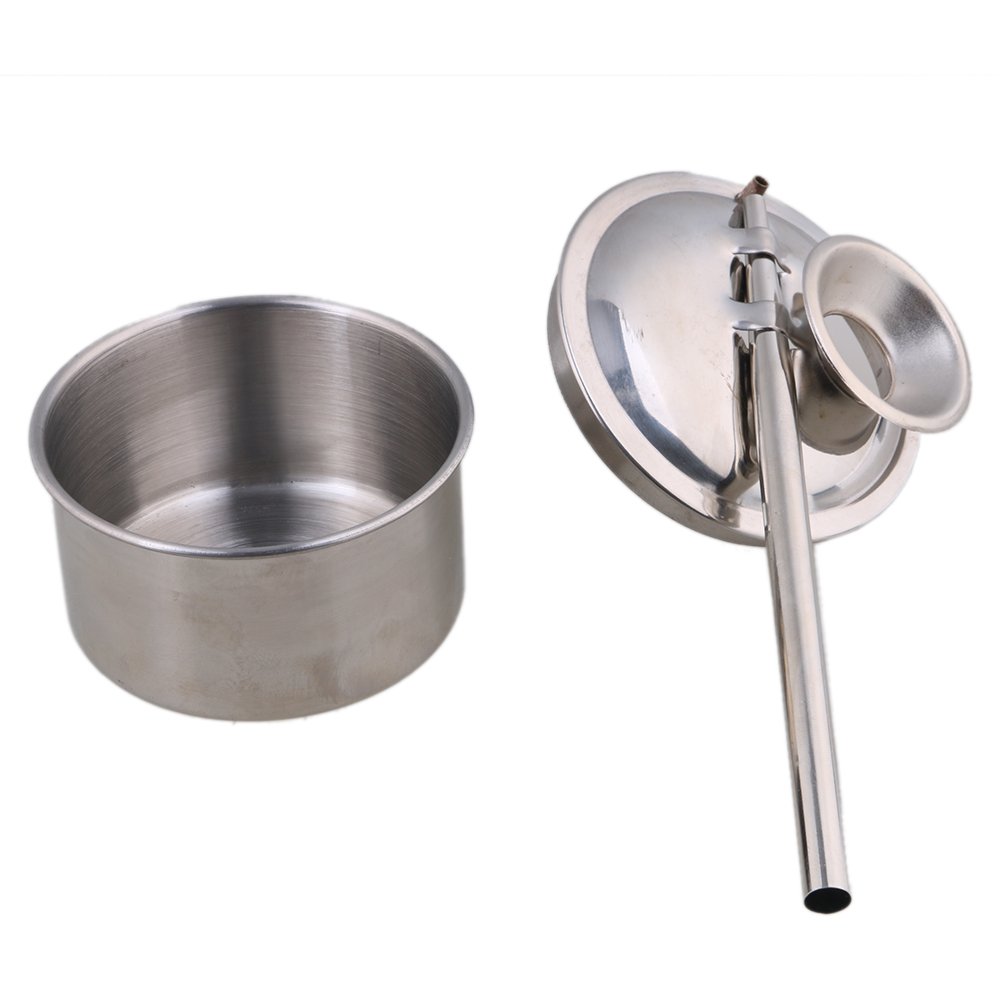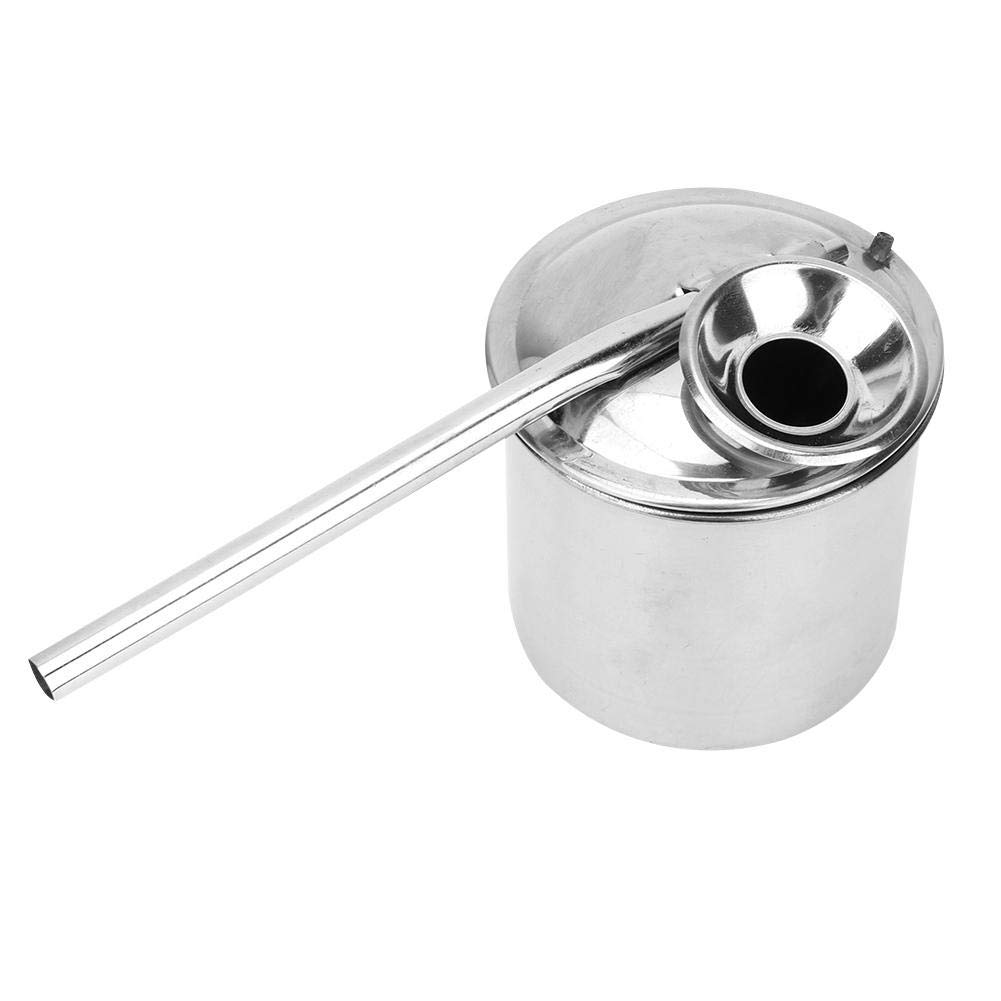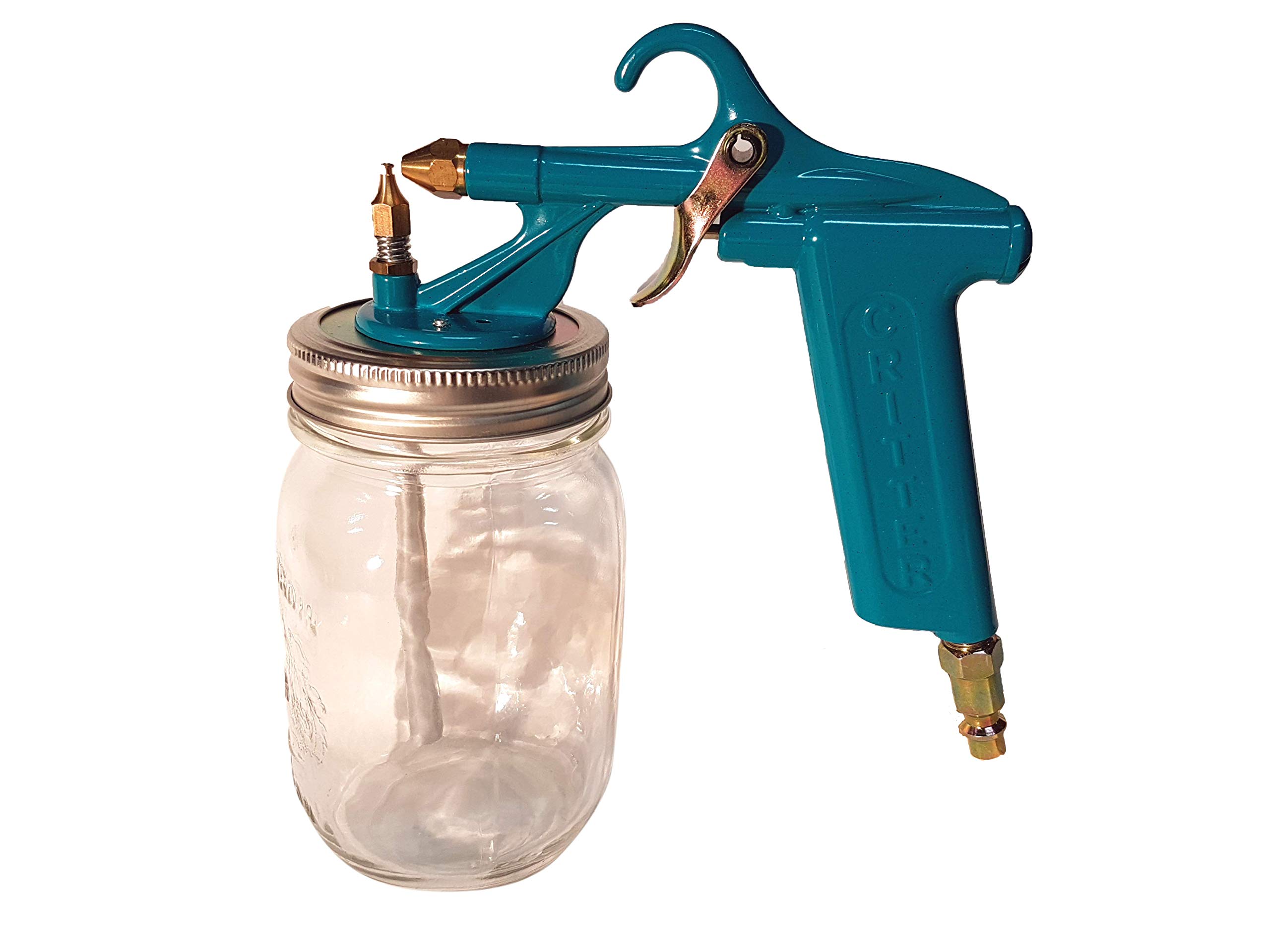Applying glaze to pottery is a crucial step in the ceramics process.
Glaze enhances both the aesthetic appeal and functionality of the finished piece.
Sprayers allow for an even and consistent application of glaze.
They produce a professional finish that can be difficult to achieve with brushes or manual methods.
By using a sprayer, potters can experiment with layering techniques, color blending, and different glazing effects.
When selecting the right sprayer for glazing pottery, there are several factors to consider.
The type of sprayer can affect both the ease of use and the finish quality.
Factors like the size and adjustability of the nozzle, the capacity of the glaze reservoir, and the sprayer’s power source are all critical elements that can influence the effectiveness of the glaze application.
It’s also important to consider maintenance and ease of cleaning, as glaze residue can be challenging to remove.
Choosing the right sprayer can make a significant difference in the glazing process and the final look of the pottery piece.
We evaluated various models to determine the best sprayers for applying glaze evenly and efficiently, ensuring potters can achieve their desired results without unnecessary hassle.
Best Sprayers for Glaze
We’ve researched and compiled a list of the best sprayers for glaze to enhance your pottery projects.
Whether you’re a seasoned ceramicist or a hobbyist, our selection covers various types and styles to meet your needs.
Explore our top picks to find the perfect tool for achieving a smooth and even glaze application.
BQLZR Pottery Glaze Sprayer
The BQLZR Pottery Glaze Sprayer is a solid choice for pottery enthusiasts looking for an easy-to-use tool with a reliable spray pattern.
- Creates an even mist essential for precise glazing.
- Made from durable stainless steel for longevity.
- User-friendly and suitable for both beginners and seasoned artists.
- Risk of rust if not properly dried after use.
- Could splatter when used with thicker substances.
- Some assembly points are fragile and may require fixing.
After experimenting with this sprayer, we found the stainless steel design holds up well under frequent use.
It delivers a consistent mist, perfect for achieving detailed finishes on ceramics.
The compact size ensures it’s effortless to handle and store.
One of the standout features of this atomizer is how easy it is to operate.
In our experience, the simplicity of the design makes it a go-to tool for a quick glaze application, whether you’re working in a studio or your backyard.
We appreciate that it’s accessible for both professionals and hobbyists alike.
While it performs well, we’ve noticed the occasional issue with solder points that might break, necessitating a quick fix.
Additionally, it’s essential to ensure the sprayer is thoroughly dried after each use to prevent rust, something easily managed with careful maintenance.
Walfront Pottery Painting Sprayer
For those wanting precise and quick application of glazes on pottery, our experience with this tool highlights its strengths and minor limitations.
- Consistently produces a fine mist for even glaze coverage.
- Made with durable stainless steel that feels sturdy and long-lasting.
- Simple and user-friendly design suitable for both beginners and experienced artists.
- Requires practice to achieve consistency in results.
- Smaller capacity might need frequent refills for larger projects.
- The mechanism might take time to learn for optimal use.
Working with the Walfront Pottery Painting Sprayer was a treat for our creative projects.
The feel of the stainless steel, combined with its ability to create a fine, even mist, really stands out the moment you start using it.
The simplicity of the tool, coupled with its durability, makes it an excellent choice for both newcomers and seasoned pottery artists.
We appreciate the sprayer’s efficient mechanism, where blowing through it results in an impressive mist distribution.
For smaller art pieces, the capacity is sufficient, allowing us to work without constant refilling.
It did take a little adjustment period to master the spray technique, but once learned, it delivers reliable results.
Overall, this sprayer is a solid option for those looking to enhance their pottery work with beautiful glaze effects.
Its practicality and sturdy design ensure that it remains a favorite in our toolkit, offering creativity a chance to flourish seamlessly.
Critter 22032 Siphon Gun
A great buy for those wanting a simple and efficient spray gun for small to medium pottery projects.
- Effortless setup and cleanup
- Compatible with standard Mason jars
- Versatile with various paint types
- Requires an external compressor
- Limited spray pattern range
- Not ideal for large-scale projects
Working with the Critter 22032 Siphon Gun was a breeze.
We found this tool to be user-friendly, making it perfect for both beginners and more experienced users.
The ability to attach Mason jars means we can switch out materials without much hassle, a huge plus for frequent switch-over tasks.
This spray gun handles a variety of finishes with ease, from polyurethanes to thick glazes.
Its simple cleaning process saves us a lot of time and effort, which is something we really appreciate.
We just connected another jar with thinner, sprayed it through, and wiped it clean with minimal fuss.
While it excels in handling small to medium projects, keep in mind that it needs a compressor for operation.
This may not be ideal if power sources are limited or for larger jobs where a broader spray pattern is required.
Despite these limitations, the Critter Spray Gun remains a reliable tool for our pottery glazing needs.
Estink Pottery Glaze Sprayer
This versatile metal atomizer is perfect for potters seeking even glaze application with ease.
- Durable high-quality stainless steel
- Provides excellent, even spray coverage
- Ideal for both seasoned and novice potters
- Requires mouth-blowing for operation
- Limited to 200ML capacity
- Might not suit those seeking automated sprayers
Experiencing the Estink Pottery Glaze Sprayer firsthand gives us confidence in its construction; the stainless steel feels robust and ready for frequent use.
Its craftsmanship assures us of its long-lasting performance, which is crucial for anyone serious about pottery.
One remarkable feature we’ve found is its ability to spray with precision.
By blowing into the sprayer, it distributes an even mist, essential for applying glazes and paints uniformly on ceramics.
It’s a tool that prioritizes control and finesse, making it valuable in our creative toolkit.
However, it’s important to note the sprayer’s reliance on manual operation, which may be inconvenient for some.
It holds a modest 200ML, requiring refills for larger projects.
Still, its simplicity and effectiveness make it a favorite choice among us for detailed glaze works.
Hztyyier Pottery Sprayer
This affordable atomizer is a reliable tool for adding a unique touch to pottery glaze projects, though it may present some challenges.
- Consistently produces a fine mist.
- Easy to use with no special setup.
- Durable stainless steel construction.
- May spatter if not positioned correctly.
- Tight lid can cause splashes when removed.
- Not all components are stainless steel.
Working with the Hztyyier Pottery Sprayer has been a positive experience for us.
It creates a delicate mist that beautifully coats ceramics, perfect for subtle glazing effects.
The simplicity of the design means it’s ready to use without the fuss of complicated setup or equipment.
Handling the sprayer, we notice its sturdy nature.
The material choices promise longevity, making it a worthwhile investment in the studio.
It effortlessly produces fine sprays, allowing us to experiment with different pottery designs, enhancing creative output.
There are some notes of caution, however.
Aligning the vertical tube correctly is key—misalignment can lead to inconsistent spraying, which might impact your project’s finish.
Also, care must be taken when handling the lid, as it’s quite snug and might splash if removed hastily with glaze inside.
Nonetheless, this sprayer remains a handy tool for pottery enthusiasts looking to achieve detailed results without substantial investment.
Buying Guide
When searching for the best sprayers for glaze, several key features should be considered to ensure optimal results.
Capacity and Size
Be mindful of the sprayer’s capacity to match your needs.
A larger capacity is beneficial for larger projects, while smaller sprayers are easier to handle for detailed work.
Material and Durability
Look for sprayers made from durable materials such as stainless steel or high-grade plastic.
These materials ensure longevity and consistent performance even with frequent use.
Adjustable Settings
Adjustable settings are crucial.
Whether it’s the spray pattern, pressure, or nozzle size, having control over these aspects allows us to tailor the spraying process to different types of glaze and application techniques.
Ease of Cleaning
Sprayers that are easy to disassemble and clean help maintain functionality and extend the lifespan of the equipment.
Consider models with simple designs that facilitate easy maintenance.
Portability and Weight
Lightweight and portable designs contribute to ease of use and reduce fatigue during long sessions.
Check for models that are not cumbersome yet remain stable during operation.
Price Range
Balancing cost with features is important.
Let’s choose sprayers that fit our budget while meeting essential requirements, ensuring we do not sacrifice quality for a lower price.
| Feature | Considerations |
|---|---|
| Capacity | Matches project size |
| Material | Durability and longevity |
| Adjustability | Control over spray settings |
| Cleaning | Ease of maintenance |
| Portability | Lightweight for ease of use |
| Price | Balance of cost and features |
By focusing on these aspects, we can confidently select a sprayer that suits our glazing needs.
Frequently Asked Questions
When choosing a sprayer for glaze, we examine options including HVLP technology, airbrush applications, atomizer sprayers, and specific industry recommendations.
Each type offers unique benefits that can improve the quality and efficiency of ceramic glaze work.
What types of spray guns are best suited for applying glaze to pottery?
There are several options, including HVLP sprayers, airbrushes, and atomizers.
Each type has its own strengths, allowing us to choose the right tool based on our specific glazing needs and desired finish.
How does HVLP (High-Volume Low-Pressure) technology benefit pottery glazing?
HVLP sprayers use less pressure, which results in less overspray.
This allows us to have better control over the glaze application, leading to a smoother and more even finish on our pottery pieces.
Can you achieve an even glaze application with an airbrush on ceramics?
Airbrushes offer fine control, making them suitable for detailed work and intricate designs.
They allow for precision in glaze application, ensuring that our ceramics receive a uniform coating where needed.
What are the advantages of using an atomizer glaze sprayer for pottery?
Atomizer sprayers distribute glaze in a fine mist, which helps in achieving a consistent layer.
This type of sprayer can be particularly beneficial when working on large or complex surfaces, providing uniform coverage.
Are there specific spray guns recommended by professionals for pottery glaze application?
Yes, professionals often recommend high-quality HVLP systems and specific airbrush brands known for their durability and performance.
These recommendations are based on consistent results and reliability in various glazing projects.
What should one consider when selecting a sprayer for ceramic glaze work?
Key considerations include the type of glaze being used, the desired finish, and the size of the pottery pieces.
We must also weigh factors like ease of cleanup and maintenance when choosing the appropriate sprayer.







